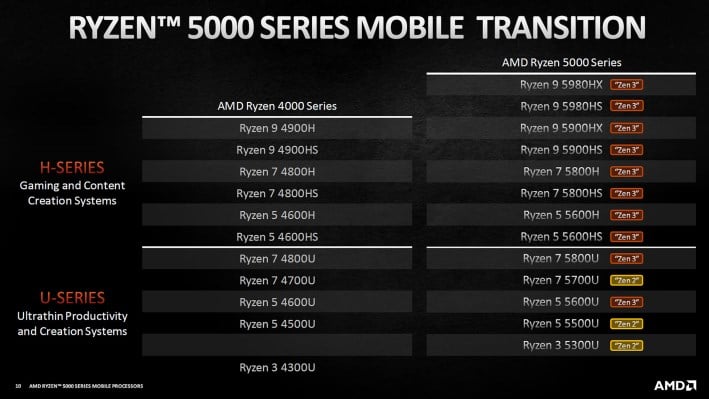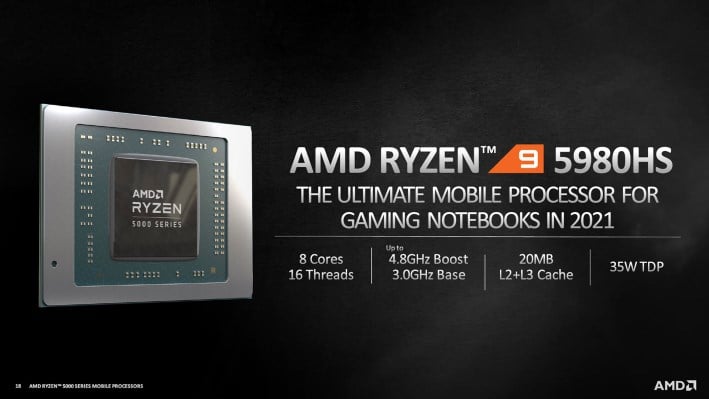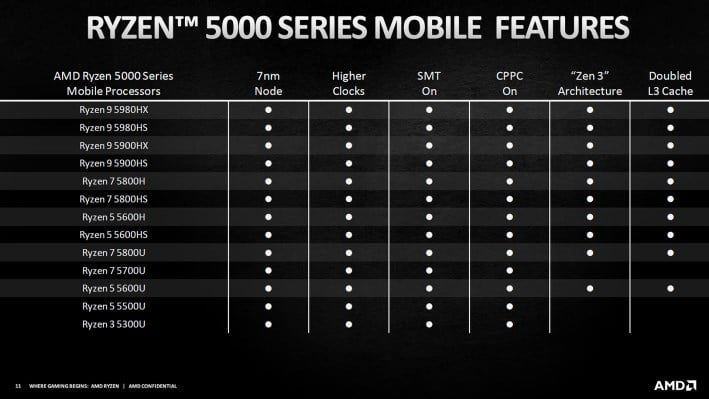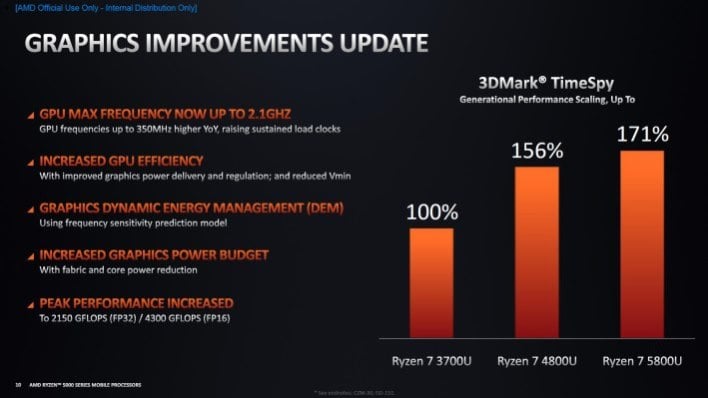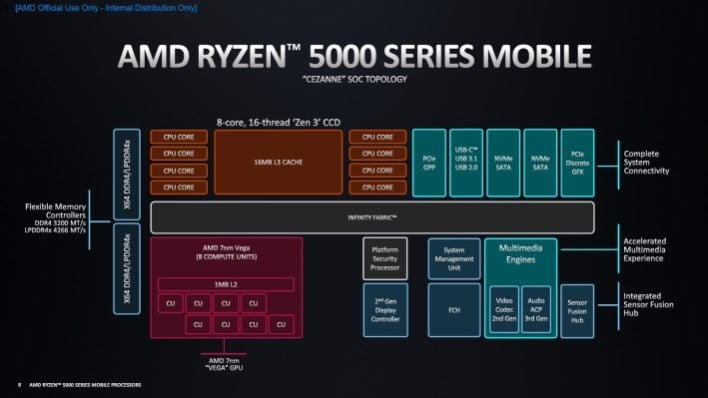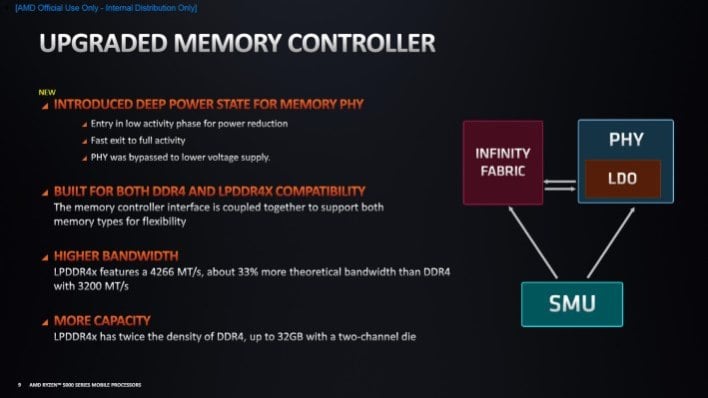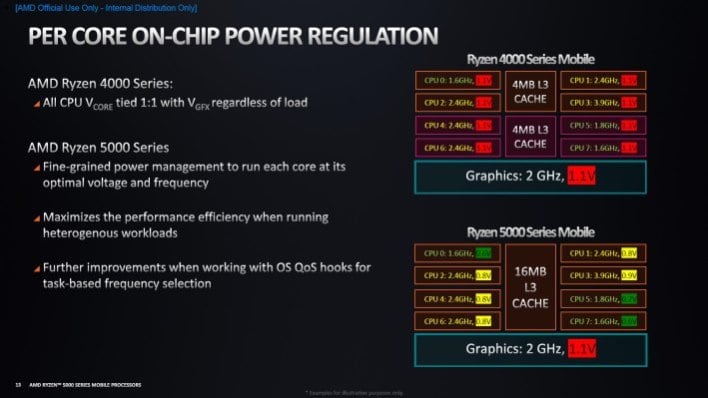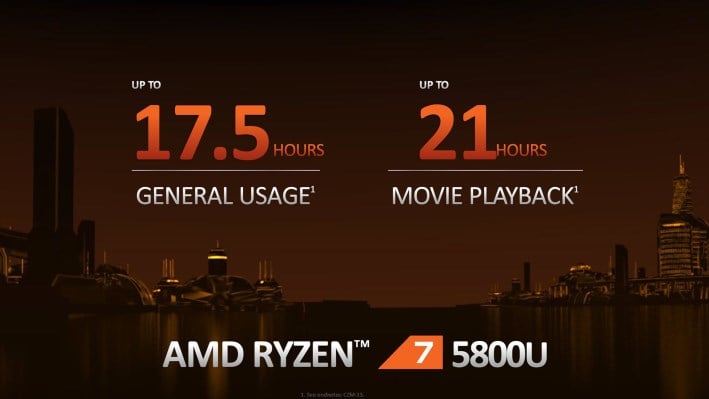AMD Ryzen 5000 Mobile Explored: The Future Of Zen 3 Laptops
AMD Ryzen 5000 Series Mobile Processors Are Poised To Empower New Laptop Experiences
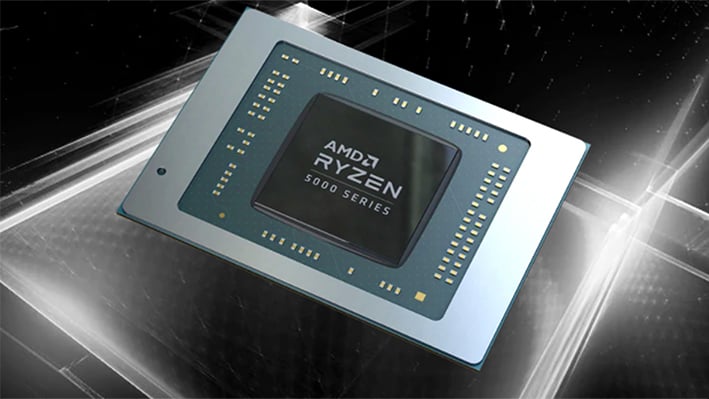
Shortly thereafter though, AMD hosted a deep-dive press briefing and discussed a number of additional details regarding the Ryzen 5000 Mobile Series. And today, we’re able to disclose to you more details of AMD's robust new laptop platform, but before we do, a bit of a recap is probably in order...
Ryzen 5000 Series Zen 3 Mobile Processor Line-Up Recap
There is a wide array of new processors in the new Ryzen 5000 Series Mobile line-up. Like their desktop counterparts, Ryzen 5000 Series Mobile processors are based on AMD’s Zen 3 architecture, which offers a myriad of performance and efficiency improvements over Zen 2. We should note that most of the processors are based on Zen 3, because there are a few that still leverage the company's previous-gen Zen 2 architecture...
In total, there are 13 processors in the initial Ryzen 5000 Series Mobile processor lineup, most of which are Zen 3-based, but as you can see in the slide above, a trio of Zen 2 processors remain in the mix. All of the CPUs are manufactured on a 7nm fab process, and the top SKUs continue to have a maximum of 8-cores (16-threads). The inherent benefits of the Zen 3 architecture, in addition to further power and frequency optimizations, and higher typical frequencies, should significantly boost performance, however, and AMD’s making some bold battery life claims as well.
Like the 4000-series, Ryzen 5000-series Mobile Processors are split into H- and U-series parts. The H-series are the higher-performance processors destined for gaming notebooks and mobile workstations, while the lower-power U-series targets thin-and-light form factors and extended battery life.
At the top of the stack is the Ryzen 9 5980HX. The Ryzen 9 5980HX is an 8-core / 16-thread processor, with 20MB of cache, a 4.8GHz max boost clock, and a greater-than 45W TDP. AMD's Ryzen 9 5980HS is essentially the same processor, scaled back slightly to hit a 35W TDP. You’ll see a similar trend throughout the rest of the stack with HS (35W) and H (45W) processors having similar configurations, but different frequencies. The top-end HX 45W+ processors are also completely unlocked for desktop-like overclocking, should OEMs enable it in their notebook designs.
The Ryzen 5000 H-series consists solely of 6-core/12-thread and 8-core/16-thread processors. The Ryzen 5000 U-series, however, scales from 4-cores/8-threads on up to 8-cores/16-threads. The U-series is also more varied, because -- as we mentioned earlier -- three of the processors in the line-up are based on the older Zen 2 architecture, and as such, have different cache and CCX configurations, and different features.
The Ryzen 3 5300U, Ryzen 5 5500U, and Ryzen 7 5700U are all Zen 2-based. AMD said they’ve repurposed Zen 2 in this generation to address OEM partner needs and hit more affordable price points. However, AMD's Ryzen 5 5600U and Ryzen 7 5800U are all-new, Zen 3-based processors.
Under The Hood Of AMD Ryzen 5000 Mobile
In terms of their feature set, all of the processors in the Ryzen 5000 Mobile series keep the same Vega-based iGPU as the 4000-series, but these new processors have higher-clocks. Faster CPU cores and increased cache, in addition to better power state management and quicker, more-precise frequency selection, should result in somewhat improved graphics performance as well, however. All told, maximum GPU clocks can be up to 350MHz higher than the 4000 series, and the average GPU frequency should remain higher with most workloads too.
All of the processors also have SMT (Symmetric Multi-Threading) enabled, and Collaborative Processor Performance Control (CPPC) is now enabled on AMD"s new mobile offering as well. The processors based on Zen 3 also have double the L3 cache vs. Zen 2, and a unified 8-core CCX config, versus the dual 4-core CCX configuration of old.
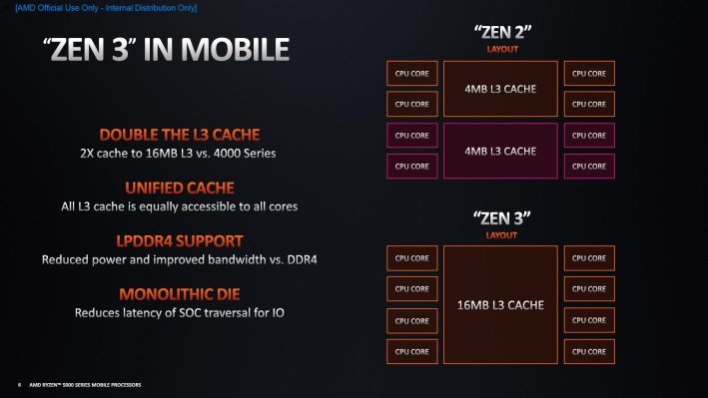
The differenced between Zen 2 and Zen 3-based mobile processors is visually represented here. With Zen 3, the L3 cache has been doubled and it is unified in that all eight of the processor cores can access all of the L3 cache. With Zen 2, not only is there half the amount of L3, but it is segmented per CCX. The platform also has LPDDR4 memory support and the SoC die is monolithic. The multi-chiplet design of desktop Zen 3-based Ryzen processors is not employed with the mobile Ryzen 5000 series.
The SoC used in Ryzen 5000 series mobile processors is codenamed "Cezanne". The 8-core CPU complex is linked to all of the various IO, sensors, accelerators, media engine, iGPU and memory controller through AMD's Infinity Fabric. The iGPU is the same 7nm-optimized, up to 8CU, Vega-based unit used in the Ryzen 4000 series, but enhancements to the memory controller and platform as whole, result in a sizable performance uptick vs. the Ryzen 4000 series mobile processors.
The memory controller in the Ryzen 5000 series mobile processors has been upgraded as well. The memory physical interface can now be supplied with lower voltages and it is able to enter a deeper lower power state, to reduce average power consumption when the load permits. The updated controller is also capable of waking to full activity very quickly according to AMD, for a negligible impact on overall performance and latency.
One of the most significant changes coming with the Ryzen 5000 series mobile processors, which has a major impact on power and efficiency is the move to per-core, on-chip power regulation. Previously, the CPU and GPU voltages were intertwined, so if the GPU required a higher voltage, the CPU cores received higher voltages as well. With the Ryzen 5000 series, however, individual CPU cores and the GPU can all have optimal voltages delivered independently, tailored for the needs of the workload that's in-flight.
Collaboration Is Key For AMD's Zen 3 Ryzen 5000 Mobile Architecture
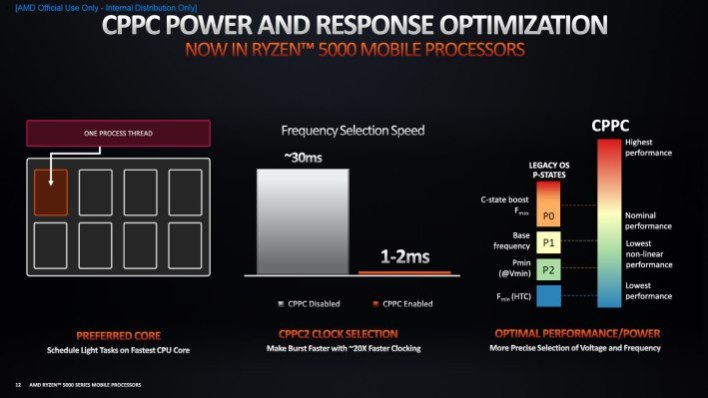
In addition to per-core power regulation, AMD Ryzen 5000 Mobile processors will also employ Collaborative Processor Performance Control (CPPC). With CPPC, the processor is in control of its own frequency and voltage selections, at all times. Using legacy OS power states meant that CPUs were programmed with a variety of frequency and voltage steps, designed for the various low / high power states. Gaps between those steps, however, meant that it was possible to over- or undershoot the desired frequency / voltage, based on a particular load. This isn't a big deal on desktops, but on mobile platforms that often rely on batteries, power is at a premium. CPPC allows for much more accurate frequency and voltage selection on the processor, which not only saves power, but allows power to potentially be reallocated to cores where it is in demand. CPPC also allows the processors to react and race to idle more quickly. Ramps times are reduced from 30ms to 1ms - 2ms, because CPPC doesn't have to consult with the OS scheduler. AMD's firmware directly analyzes conditions and is able to respond accordingly, and can even prioritize lightweight, quicker-to-execute tasks on the preferred / fastest core.
All of these enhancements and optimizations are claimed to yield better performance and battery life. In fact, according to AMD, if a partner were to take a the exact same Ryzen 4000-series mobile platform, and do nothing else but swap out the processor SoC for a Ryzen 5000 Mobile Series part, the machine could offer up to two hours of additional battery life. The fact that the processors are pin-compatible (and simply swapping processors is even an option) is also an important consideration, which facilitates quicker designs and optimized go-to-market strategies for AMD's partners.


